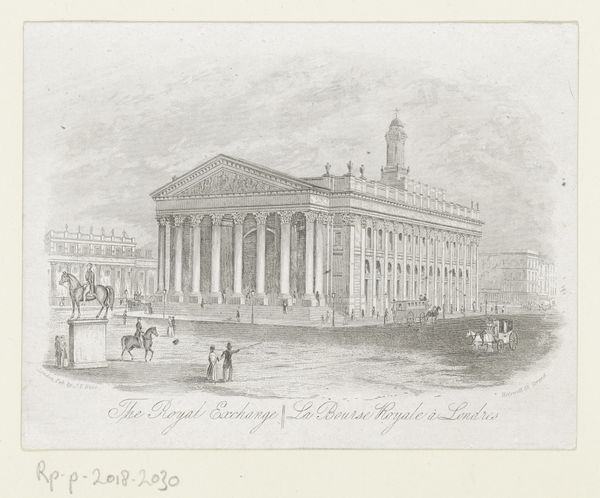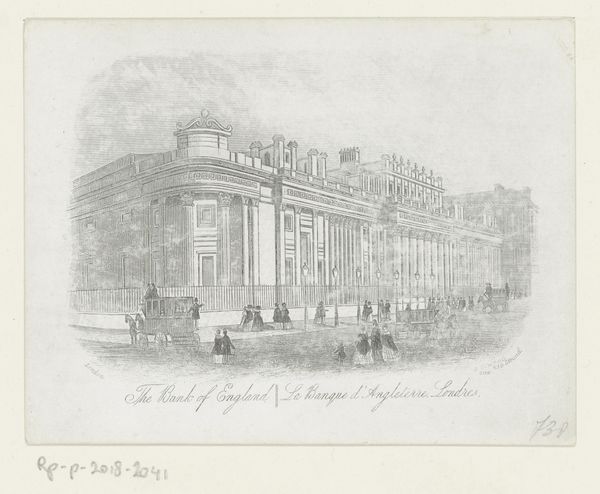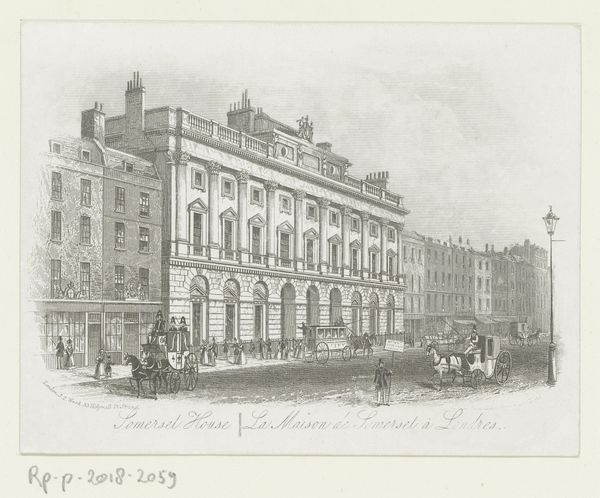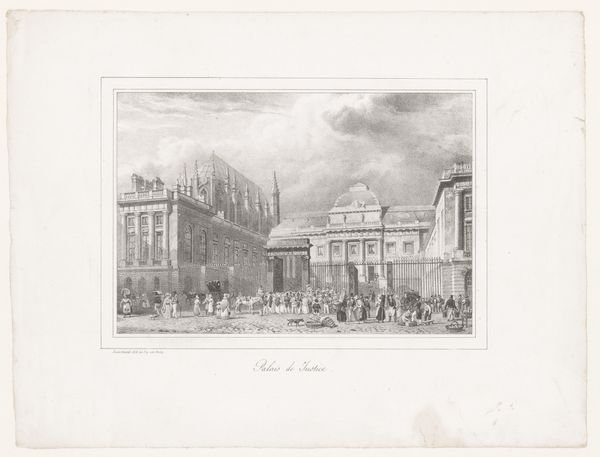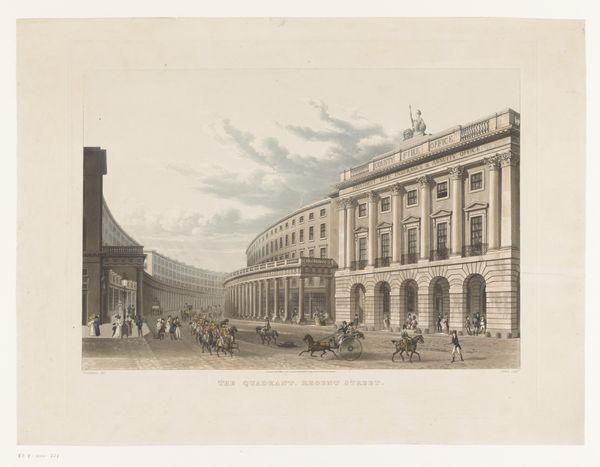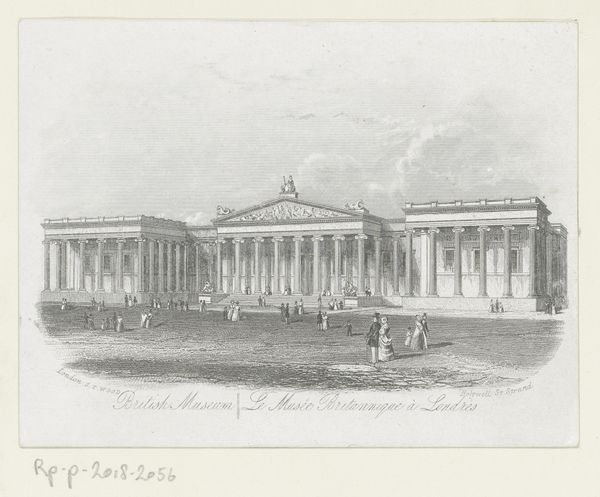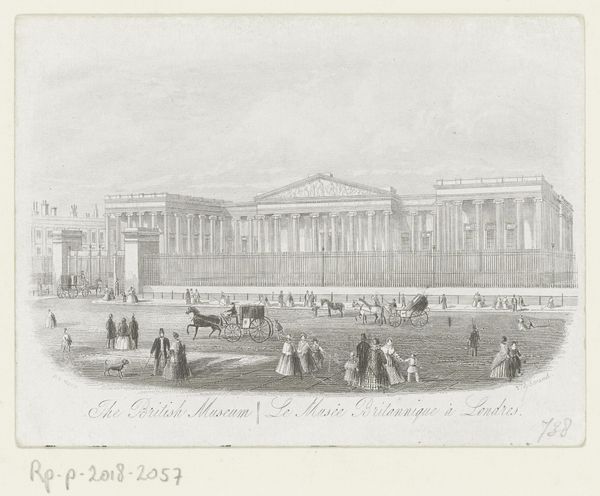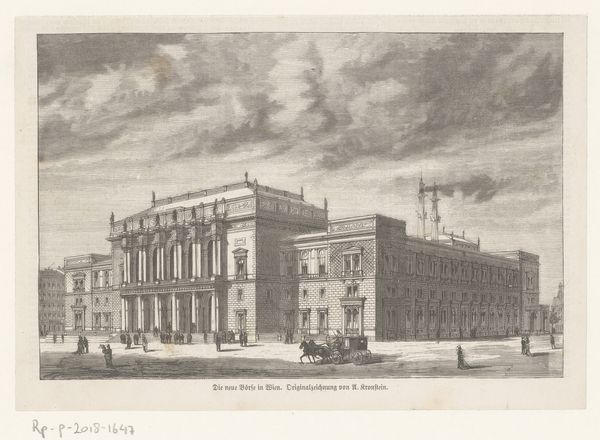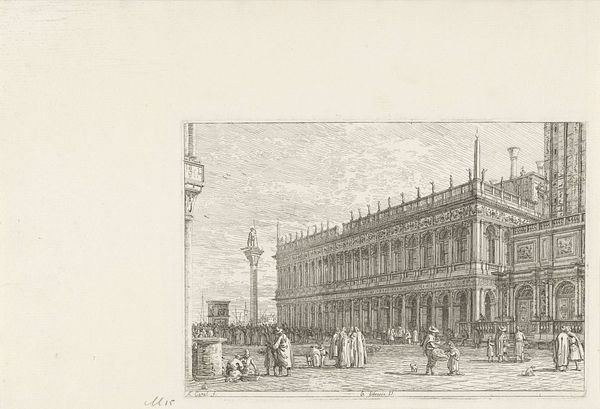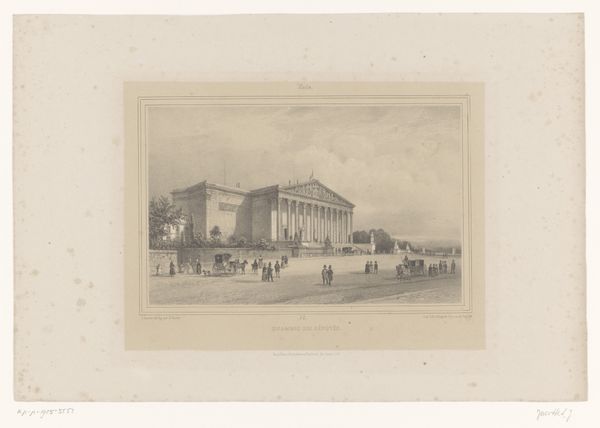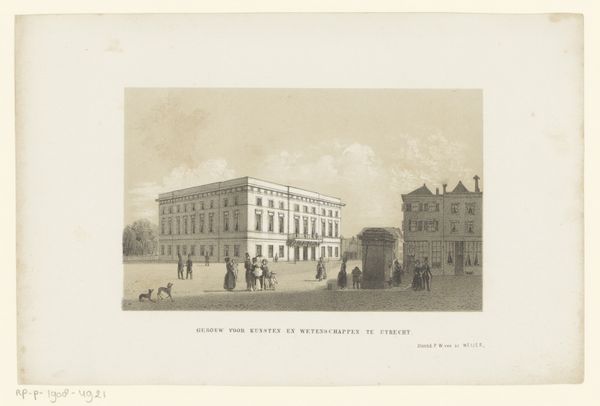
print, etching, paper, engraving
#
neoclassicism
# print
#
etching
#
paper
#
cityscape
#
engraving
Dimensions: height 117 mm, width 152 mm
Copyright: Rijks Museum: Open Domain
This print of the Bank of England in London was made at an unknown date by an anonymous artist, using etching and engraving. The linear precision of both techniques is well-suited to capturing the Bank’s Neoclassical architecture, built to project power and stability. With etching, the artist would have drawn through a wax ground on a metal plate, then exposed it to acid; the longer the exposure, the deeper the line. Engraving involves manually cutting lines into the plate with a tool called a burin. The sharp, controlled marks of both techniques enabled the artist to depict fine details, such as the horse-drawn carriages and pedestrians populating the scene. Prints like these were products of a burgeoning commercial culture. They could be widely disseminated, and thus played a crucial role in shaping public perceptions of institutions like the Bank of England. The labor-intensive process of etching and engraving reflects the value placed on skilled craftsmanship in the pre-digital age. Ultimately, the print embodies the convergence of artistic skill, technological innovation, and economic power.
Comments
No comments
Be the first to comment and join the conversation on the ultimate creative platform.
